Search Images
Browse Content (p. 1738)
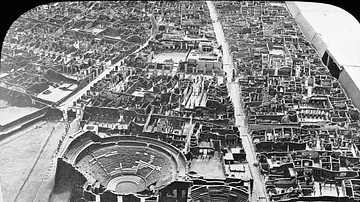
Image
Aerial View of Pompeii
A black and white photo taken c. 1900 CE of the Roman town of Pompeii, buried in volcanic ash following the eruption of Veusvius in 79 CE. In the foreground are two theatres.
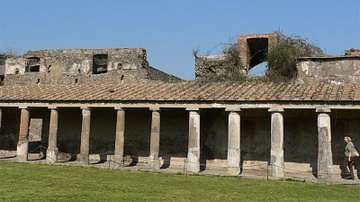
Image
Stabian Baths, Pompeii
Colonnades of the Stabian Baths at Pompeii, the Roman town buried in volcanic ash following the eruption of Vesuvius in 79 CE. The building was first constructed in the 4th century BCE and modified in the 2nd century BCE.

Image
A Pompeii Bakery
A view of the millstones and oven of a bakery (Pistrinium) in the Roman town of Pompeii which was buried in volcanic ash following the eruption of Vesuvius in 79 CE. The millstones have square sockets in which wooden beams would have been...
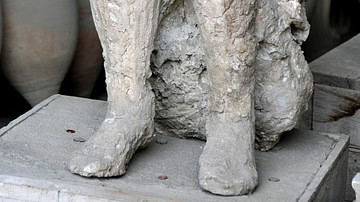
Image
Pompeii Victim, the Muleteer
A cast of the 'muleteer', a victim of the eruption of Vesuvius which completely covered Pompeii in 79 CE. The poisonous and super-heated gas cloud which struck Pompeii following the initial ash fall-out asphyxiated and baked any remaining...
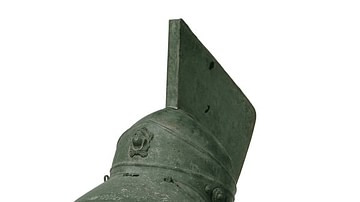
Image
Samnite Gladiator Helmet
A 1st century CE bronze gladiator helmet of the Samnite class. Roman gladiator helmets were richly decorated and plumed with ostrich or peacock feathers. This relatively plain example has the embossed head of Hercules at the front. Provenance...
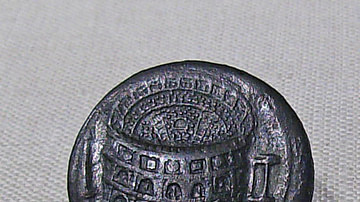
Image
Bronze Sestertius with Colosseum
A bronze sestertius from the reign of Roman emperor Titus (79-81 CE), which depicts the Colosseum or Flavian Amphitheatre. Clearly shown are the four arched stories, statues within the arches and the large monumental fountain - the Meta Sudans...
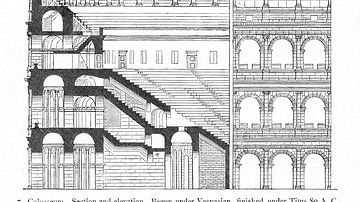
Image
Colosseum Cross-Section
A cross-section of the Colosseum or Flavian Amphitheatre in Rome (begun in 72 CE). The diagram illustrates the four floors with wide access stairways and the outer decoration of (starting from the bottom) Doric, Ionic and Corinthian columns...

Image
The Colosseum or Flavian Amphitheatre
Construction of the Colosseum in Rome was begun in 72 CE by Vespasian and completed between 81 and 96 CE in the reign of Domitian. The arena hosted gladiator contests, wild animal hunts and public executions.

Image
The Great Wall of China in Snow
A section of the Great Wall of China just north of Beijing. The wall was begun in the 7th century BCE and significantly extended by the Ch'in emperor Qin Shi Huangdi from 220 to 210 BCE.
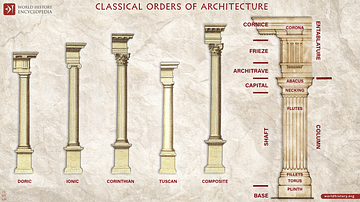
Image
Architectural Column Orders
The Classical Orders of Architecture, rooted in ancient Greece and further developed by the Romans, are essential design principles shaping classical and neoclassical buildings. These orders - Doric, Ionic, and Corinthian - have their roots...